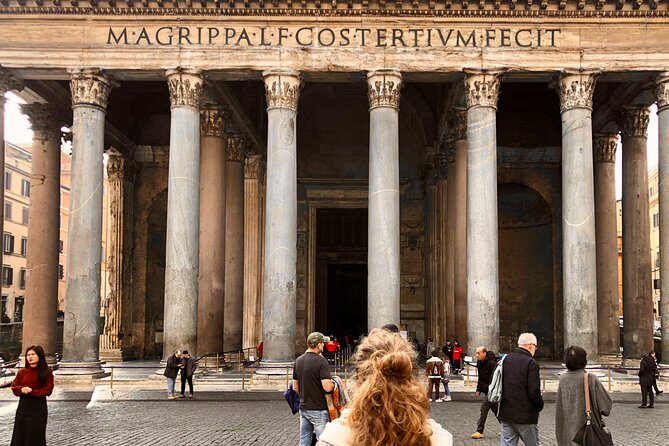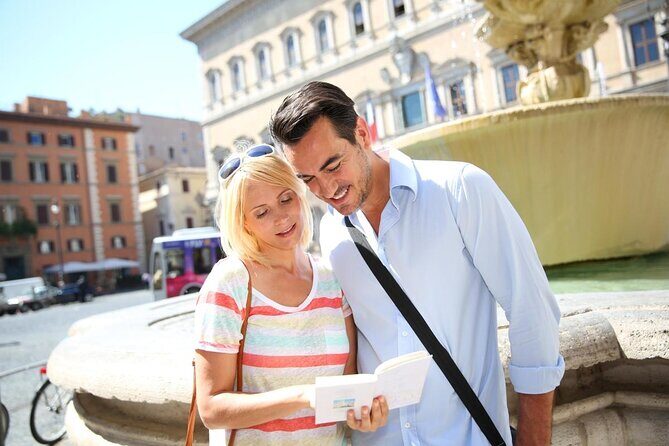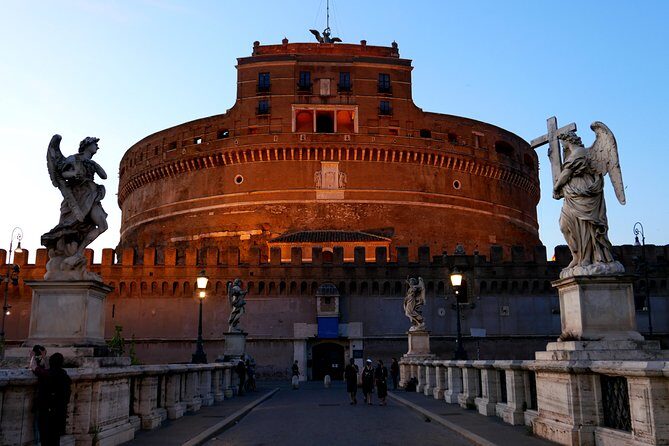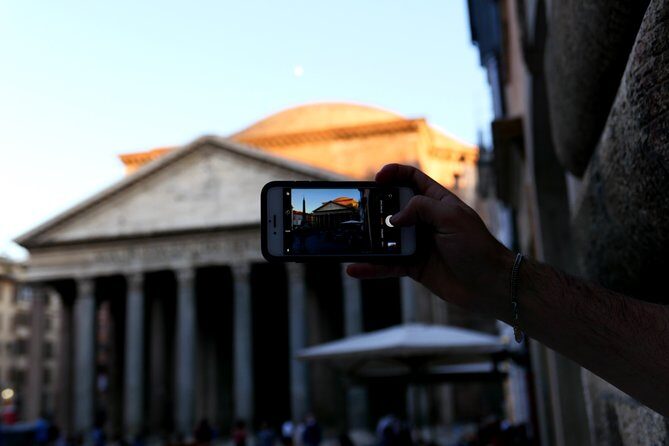Physical Address
304 North Cardinal St.
Dorchester Center, MA 02124
Physical Address
304 North Cardinal St.
Dorchester Center, MA 02124

Explore Rome through the lens of Puccini’s Tosca on this private 3-hour walking tour, combining iconic landmarks with opera-inspired storytelling.
Experience Rome’s Historic Heart with an Opera Twist
This private tour offers a unique way to see Rome’s most famous sights while following in the footsteps of Puccini’s timeless opera, Tosca. Spanning approximately 2.5 hours, it’s designed for those with an appreciation for opera, history, or both. The guide’s insightful commentary, paired with exclusive access to some of Rome’s most beautiful Renaissance and Baroque landmarks, promises a memorable deep dive into the city’s artistic and cultural tapestry.
What we particularly love is the personalized nature of this experience. With only your group, you get tailored insights and the chance to ask plenty of questions. A small group environment makes it easy to follow along, especially with provided headsets that ensure you don’t miss a detail even while walking.
One possible consideration is that the tour does not include entrance fees to Castel Sant’Angelo or Farnese Palace, so you might want to budget a little extra if you plan to explore those sites further. Still, the value lies in the expert narration, the scenic walks, and the chance to connect the dots between Rome’s history and Puccini’s opera.
This tour is best suited for culture lovers, opera fans, or anyone keen to explore Rome’s highlights with a thematic twist. It’s perfect if you enjoy stories that connect art, history, and music into one seamless journey.


Looking to discover more of Rome? Consider these other city tour options
Our journey begins at Largo Argentina, where the guide greets you amidst ancient Roman ruins. This site is a fascinating mix of history, with ruins dating back to the Roman Republic era. The guide spends a few minutes explaining these remnants, setting the stage for your walk through Rome’s historic core. It’s a great way to orient yourself right from the start, especially as the guide’s clear narration makes these ruins come alive.
Next, you’ll step into the Basilica di Sant’Andrea della Valle, a masterpiece of 16th-century art. The guide highlights Domenichino and Lanfranchi’s frescoes, emphasizing how this church’s dramatic architecture and interior reflect the grandeur of the era. Most notably, this is the real-life spot where Tosca’s jealousy outburst takes place in the opera, adding a layer of theatrical connection that opera fans will appreciate. The church’s first baroque dome also offers a stunning visual treat.
Passing through Campo de’ Fiori, you’ll get a sense of the lively Roman atmosphere. This square, once a marketplace, now signals the transition from the ancient to the modern city. The guide shares snippets about its history and how it relates to the opera’s second act, moving toward the Farnese Palace.
The next stop is Piazza Farnese, a lively square renowned for its Renaissance architecture and the twin fountains that adorn it. Here, your guide delves into the history of Palazzo Farnese, one of Rome’s most important Renaissance buildings, and discusses its role in Tosca. It’s a perfect spot to admire Roman history and story-telling at once. While the interior isn’t included, the exterior beauty and the stories behind the palace make this a highlight.
For a more personal experience, these private Rome tours deliver individual attention
From the square, your guide narrates the plot details of the opera’s second act, tying them to the nearby buildings. Though entry isn’t included, understanding the palace’s history enriches your appreciation for the setting. This is where the drama unfolds in the opera, and being there in person adds an emotional layer to your experience.
As you stroll toward Piazza Navona, the guide points out its stunning fountains, statues, and churches. This square, with its lively street performers and historic charm, offers a lively contrast to the earlier, more solemn sites. The guide’s storytelling weaves in the square’s evolution from Roman times to today, making it a delightful stop for anyone interested in Rome’s layered past.
No visit to Rome is complete without the Pantheon. The guide describes the awe-inspiring architecture, from its massive dome to its well-preserved interior. You’ll learn about its original purpose and its significant influence on architecture, making this stop both an aesthetic and educational highlight. Its proximity to the other sites makes it a logical and enriching inclusion.
The tour culminates at Castel Sant’Angelo, where Tosca’s tragic finale takes place. The guide shares the castle’s long history, from Emperor Hadrian’s mausoleum to a papal fortress and treasury. Though entry into the castle isn’t included, the surroundings are perfect for photos, and the views along the Tiber River are spectacular. The guide’s stories about its use over centuries add depth to the visit, rounding out the experience with a sense of place and history.
This tour isn’t just about seeing Rome’s sights—it’s about understanding how history, architecture, and art intertwine with the storytelling of Tosca. The guide, who has been praised for their knowledge and passion (with one reviewer specifically mentioning Arturo for his excellent storytelling), makes the story come alive. The headsets ensure you catch every detail, even amid the lively streets.
While the cost of approximately $149 per person might seem steep at first glance, the value lies in the personalized narration, the scenic routes, and the thematic focus. You’re paying for an experience that marries history, art, and opera into a compact, engaging walk through Rome’s most emblematic spots.
The tour’s timing makes it ideal for those with limited time in Rome but who want a rich, layered experience. It’s also a great way to get oriented before exploring on your own or as a cultural highlight if you’re already a fan of Puccini’s work.

If you’re into opera and classical music, this tour gives you a fresh perspective by linking Rome’s streets with Puccini’s Tosca. History aficionados will appreciate the well-informed commentary about the landmarks, while art lovers will enjoy the detailed descriptions of churches and palaces. It’s also suitable for those who prefer a private, more intimate experience over crowded group tours.
Travelers with moderate physical fitness will find the walk manageable, but comfortable shoes are recommended. Since entrance fees are not included, you might want to plan additional visits to Castel Sant’Angelo or Farnese Palace if you wish to explore further.
This tour offers a special blend of cultural storytelling and sightseeing, ideal for a refined, thematic exploration of Rome.

Is this a walking tour?
Yes, it’s a walking tour that lasts around 2 hours and 30 minutes, covering several landmarks on foot.
Are entrance fees included?
No, entrance to Castel Sant’Angelo and Farnese Palace are not included, so expect to pay separately if you choose to explore those sites.
Is this tour suitable for children?
While not specifically aimed at children, the moderate walking distance and engaging storytelling make it suitable for older kids or teens interested in history and opera.
What should I wear?
Comfortable walking shoes are highly recommended, as the tour involves a fair amount of walking across uneven cobblestone streets.
Can I cancel or reschedule?
Yes, the tour offers free cancellation up to 24 hours in advance, giving you flexibility if your plans change.
Is the tour available in different languages?
The provided information does not specify language options, so check ahead with the provider if you need details on language availability.
To sum it up, this private Rome tour offers a well-rounded, culturally rich experience that marries sightseeing with opera storytelling. It’s perfect for those who want to explore Rome’s historic landmarks through a thematic lens, guided by knowledgeable experts who bring the city’s stories to life. With its intimate setting, scenic routes, and insightful commentary, it’s a fantastic option for culture enthusiasts, opera fans, or anyone seeking a meaningful way to see Rome beyond the usual tourist spots. Just be prepared for some walking, and budget for a few extra euros if you want to access the interiors of key sites.